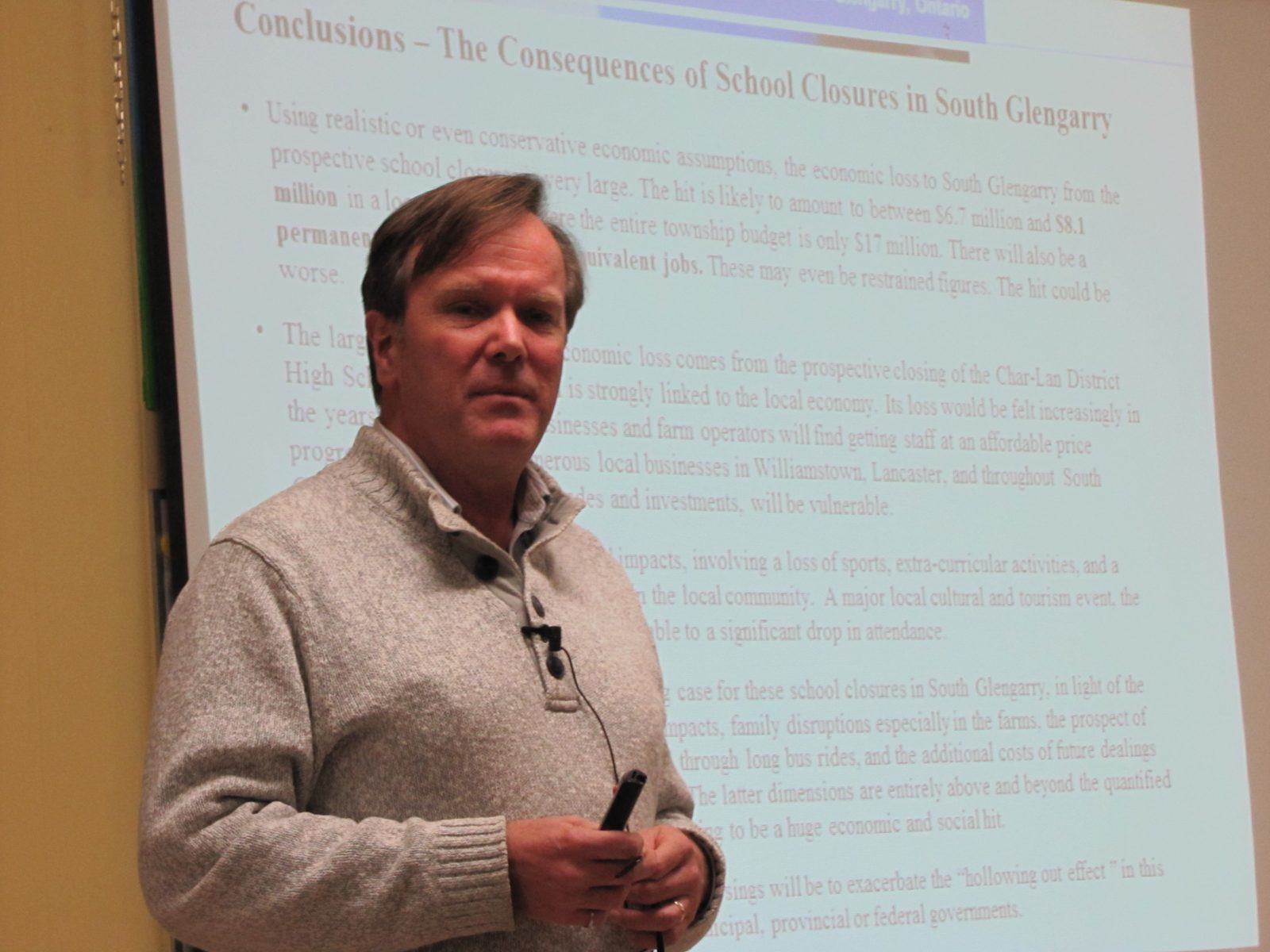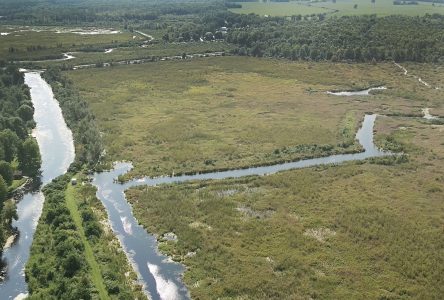CORNWALL, Ontario – Residents of South Glengarry braved the freezing rain and icy roads to meet at Irvine Hall in Williamstown. There Dolytech representative Neil Knudsen explained the results of his company’s study. “With out a doubt,” he said. “Closing the schools in this area will cost the Township almost $7 million annually.”
In terms of jobs, Doyletech’s report predicts that the area would lose 20 jobs if the Upper Canada District School Board (UCDSB) follows through with the plan it has laid out in its Pupil Accommodation Review (PAR).
If the PAR passes the final vote by the school board on March 23, then S.J MacLeod Public School and Char-Lan District High School would close effective June 30.
The residents of South Glengarry have been heavily involved in the consultation process setup by the UCDSB on the school closure issue and have also strongly opposed the move.
The UCDSB has proposed to close schools across its region, including in SD&G. Five of the six counties of SD&G, including South Glengarry have hired Doyletech to conduct impact studies on the school closures.
Neil Knudsen told the assembly on Thursday night, that South Glengarry will be particularly hard hit by the school closures.
The lost jobs would mean a loss of $49, 000 to the tax base of the municipality in addition to the loss of nearly $7 million to the economy. The entire budget of South Glengarry Township is $15 million.
Knudsen said that if families move away from the area because there is no high school the economic blow could rise to $8 million.
On top of this, the exodus could cause a permanent excess in houses on the retail market in the area, which will lower everyone’s housing prices.
Knudsen and Doyletech also looked at the effect on the children.
Children currently going to Char-Lan could expect a bus ride of over an hour one-way to get to school. Knudsen said that this would have a serious negative effect not just on their education, but also on the economic productiveness of the area as many of them help their parents on their farms.
Knudsen shot down suggestions that a bigger school will create more educational opportunities for students.
“We found that these increased opportunities often aren’t taken advantage of,” he said.
Sally Phypers of the Save Char-Lan team told the assembly some plans they were going to present to the school board to demonstrate how Char-Lan can continue to be viable and innovate for the future.
One is to have Virtual Classrooms. Virtual classrooms will allow teachers to teach interactively and remotely and reach a multitude of students at once. To make the Virtual classrooms work however, timetable alignment would have to be encouraged so that class times at different schools match up together.
Phypers said that the families living in the Char-Lan Feeder group of S.J MacLeod, Williamstown Public School and Char-Lan had been the most responsive to the school board about their PAR, with the response being mostly against their proposal.
The biggest solution that has been presented to the school board is to combine Char-Lan and Williamstown Public into a single campus K-12 school.
Phypers commented that Stephen Sliwa, the UCDSB’s Director of Education had remarked on how close Char-Lan and Williamstown Public were to each other.
“Although as Director of Education he should be already familiar with the schools, he had said that he had forgot that Char-Lan and Williamstown Public were right across the street from each other,” she told the meeting’s attendees.
Jennifer MacIsaac of the Save Rothwell-Osnabruck group visited the Save Char-Lan meeting to tell them some of the advantages of K-12 schools.
The biggest benefit she explained to the meeting was the continuity in education and the sense of community that students develop by attending the same school, with the same students and teachers for 14 years.
The final public Accommodation Review Committee meeting will be at General Vanier in Cornwall at 6:30 p.m. on Monday, Jan. 23. Those who want their voices heard are encouraged to attend.


